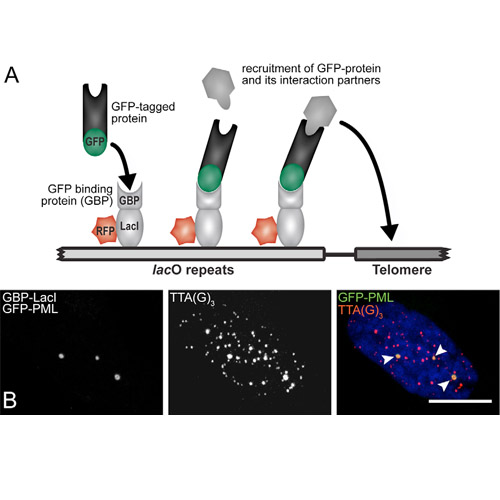De novo assembly of a PML nuclear subcompartment occurs through multiple pathways and induces telomere elongation
01-Nov-2011
Journal of Cell Science, 2011, doi: 10.1242/jcs.084681, 124, 3603–3618, published on 01.11.2011
Journal of Cell Science, online article
Journal of Cell Science, online article
Telomerase-negative tumor cells use an alternative lengthening of telomeres (ALT) pathway that involves DNA recombination and repair to maintain their proliferative potential. The cytological hallmark of this process is the accumulation of promyelocytic leukemia (PML) nuclear1 protein at telomeric DNA to form ALT-associated PML bodies (APBs). Here, the de novo formation of a telomeric PML nuclear subcompartment was investigated by recruiting APB protein components.We show that functionally distinct proteins were able to initiate the formation of bona fide APBs with high efficiency in a self-organizing and self-propagating manner. These included: PML and Sp100 as the constituting components of PML nuclear bodies, telomere repeat binding factors 1 and 2 (TRF1 and TRF2, respectively), the DNA repair protein NBS1 and the SUMO E3 ligase MMS21, as well as the isolated SUMO1 domain, through an interacting domain of another protein factor. By contrast, the repair factors Rad9, Rad17 and Rad51 were less efficient in APB nucleation but were recruited to preassembled APBs. The artificially created APBs induced telomeric extension through a DNA repair mechanism, as inferred from their colocalization with sites of non-replicative DNA synthesis and histone H2A.X phosphorylation, and an increase of the telomere repeat length. These activities were absent after recruitment of the APB factors to a pericentric locus and establish APBs as functional intermediates of the ALT pathway.











